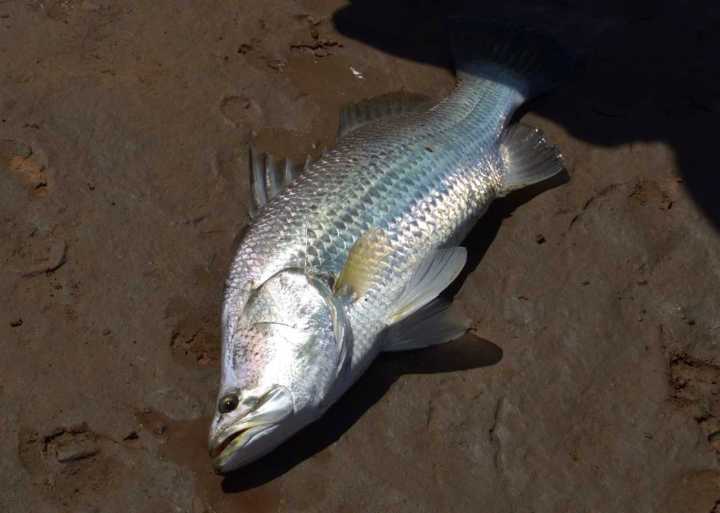By Mischa Turschwell
Predator-prey interactions between fishes are important ecological processes that help maintain healthy populations and ecosystems. But often we don’t know if predators control prey numbers (top-down control) or if the number of prey available controls predator numbers (bottom-up control). We also don’t know how these interactions might change if environmental conditions like riverine flow change. Knowing this is really important in large tropical, unregulated rivers that experience strong seasonality (i.e. a wet season and a dry season).

In this recent research, we asked whether relationships between barramundi and their prey are more likely to be top-down or bottom-up, and whether these change depending on river flow. We used Bayesian models to answer these questions using data collected from the Daly River in the Northern Territory (Image. 1).
Our findings suggest that the successful management of the iconic predator, the barramundi, should consider both flow management and other key factors such as habitat maintenance to support their prey.
We found that variation in barramundi abundance was strongly related to both the abundance of prey fishes and recent flow conditions (Fig. 1). We also found that barramundi abundance is more likely influenced by bottom-up, rather than top-down controls. This means that habitat conditions that support more prey species will have a positive influence on Barramundi populations.

Further, the strength and direction of the relationships we uncovered varied across the catchment and between seasons. We found stronger, positive relationships between barramundi abundance and prey abundance in the most downstream sites which has higher mean annual flows.

Our findings suggest that the successful management of the iconic predator, the barramundi, should consider both flow management and other key factors such as habitat maintenance to support their prey.

Full research Publication can be found here: https://onlinelibrary.wiley.com/doi/full/10.1111/fwb.13318